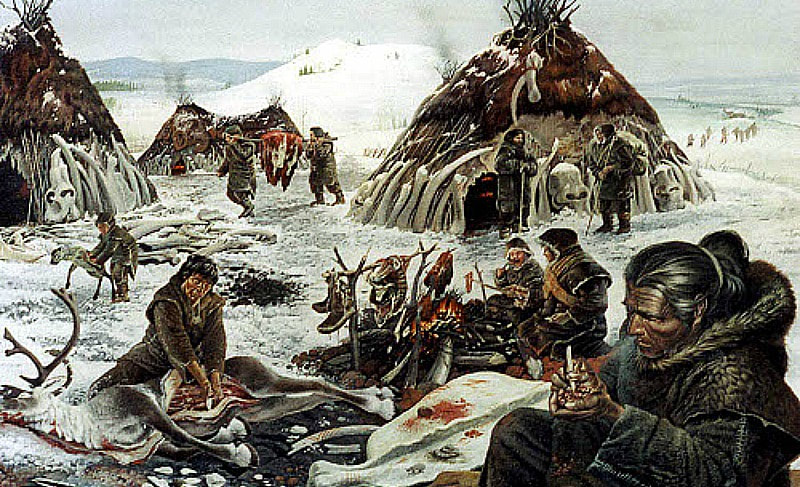WEEK #1 (August 14th-18th)
Monday: Mr Wilson introduced us to the syllabus, explained our class norms and showed us a little presentation about himself
Tuesday: We examined the kinds of sources we will be using to investigate the stories, themes and accomplisments of our past
POWERPOINT
Wednesday. On this day we began to look at the earliest stages of pre-history, Mr Wilson showed us some of the note taking strategies we will employ this semester POWERPOINT
Thursday: We explored the role water and it's availability played in the first emerging civilizations, why water and irrigation was a major factor in the rise of the state. POWERPOINT
Friday: The week wrapped up as Mr Wilson introduced us to the Weekly Vocab Quiz, explained Homework expectations, and finished the Copper, Bronze and Iron age discussion
Week 1 Vocab.
Paleolithic - (Old Stone Age) Early period of the Stone Age marked by the use of stone tools and hunter-gatherer societies.
Mesolithic – (Middle Stone Age) Permanent settlements and the beginnings of agriculture.
Neolithic - (New Stone Age) The time period starting nearly 6000 years ago when people started using writing.
Agriculture - Another word for farming
Domesticate -To train plants and animals to become useful for humans
Surplus - An extra supply of something
Specialization -People training to do particular kinds of work
Archeologist - A person who studies the artifacts, fossils, or remains of past cultures to better understand the past.
Trade - The exchange of goods
Hunter-Gatherer - People that hunt and gather for their food
Artifact - An object made by someone in the past
Fossil - The ancient remains of a once living thing, it could be a bone of an animal or an imprint of a plant molded in stone.
Resources:
Note Catcher Click Here
Week #1 Homework:
Choose two objects from the list below, listen to the associated podcast, print off the note catcher above, then fill it out using two of these essential questions "What is the evidence that explains the earliest history of humans and the planet?
What are the theories that interpret this evidence?
Where did humans first appear on Earth, and what were their society, technology, and culture?
Describe earliest humans’ technology & tools
What were the earliest humans’ religious beliefs and practices?
How did the earliest humans’ society help them procure enough supplies to survive?
"
- Mummy of Hornedjitef
- Bird-shaped pestle
- Olduvai stone chopping tool
- Ain Sakhri lovers figurine
- Olduvai handaxe
- Egyptian clay model of cattle
- Swimming reindeer
- Maya maize god statue
- Clovis spear point
- Jomon pot
Standards Addressed:
1. Use the historical method of inquiry to ask questions, evaluate primary and secondary sources, critically analyze and interpret data, and develop interpretations defended by evidence
2. The key concepts of continuity and change, cause and effect, complexity, unity and diversity over time
a. Evaluate continuity and change over the course of world history (DOK 1-3) b. Investigate causes and effects of significant events in world history (DOK 1-2) c. Analyze the complexity of events in world history (DOK 2-3) d. Examine and evaluate issues of unity and diversity in world history (DOK 1-3)
Essential Questions:
What is a Primary Source? a Secondary Source? what are the strengths and weaknesses of each?
What is the evidence that explains the earliest history of humans and the planet?
What are the theories that interpret this evidence?
Where did humans first appear on Earth, and what were their society, technology, and culture?
Describe earliest humans’ technology & tools
What were the earliest humans’ religious beliefs and practices?
How did the earliest humans’ society help them procure enough supplies to survive?

